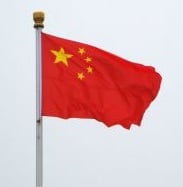China has laid plans to change a commercial slur into a flattering term, at least for the quality of drugs it produces. The goal over the next 10 years or so is to make "Made in China" mean something other than cheap and shoddy work.
In tandem with that drive is an increase in drug research in the country, including more small biotechs, contract research organizations and collaborations of local drugmakers with multinationals.
Several factors appear to make it necessary for China to be more of a producer than buyer of medicines. The greatest is its attempt to deal with an aging population, many with chronic diseases, the major one diabetes. At the same time, the current government is also focused on anticorruption.
Various industry players interviewed by Reuters noted the changing landscape in China as reforms take hold. One cited the crackdown on hospital drug markups that led to corruption on both sides of the wholesale-retail deal.
He was referring to branded generics that used to provide up to half a hospital's revenues in a market of prescription drug sales dominated by hospitals rather than retail stores.
 The number of China-based drugmakers continues to grow and become more sophisticated with an eye to innovation in an industry that has been focused on generics, going head-to-head in some areas with foreign drugmakers.
The number of China-based drugmakers continues to grow and become more sophisticated with an eye to innovation in an industry that has been focused on generics, going head-to-head in some areas with foreign drugmakers.
At the same time, the world's top generic drug maker, India, has been hit by a wave of U.S. FDA enforcement actions for poor manufacturing and record keeping even as the government pursues its own "Make in India" campaign. To be sure, the U.S. regulator has also taken a harder look at products from China where food and drug adulteration or fakes remain a worry, though the work is hampered by an inspection manpower shortage because of visa issues.
Multinational drugmakers also foresee a change in the China market, one in which they need to come up with new medicines that also are affordable outside the large cities, relying on volume rather than high prices to drive profits.
Novo Nordisk ($NVO), which has a heavy presence in China's market of 110 million diabetics, has seen a decrease of late in its 63% share of the insulin portion. A company official said local competition has been growing, intensifying the pressure on the Denmark-based drugmaker to step up its own production within China.
Reuters said that even in other parts of China's drug market, the nation's 10 largest local drugmakers see an average of 12% growth this year, IMS Consulting estimates. That is double the growth of multinationals, the news service reported.
Local growth also has not escaped the eyes of the China FDA, which is working on increasing the speed with which it reviews and approves innovative drugs. Reuters cited a spokesperson for Fosun Pharma, who said that local drugmakers focused on new drugs are likely to be the main beneficiaries of a speedier CFDA process at the same time the agency continues cracking down on the quality of locally produced generics.
One of the new research companies is Hua Medicine, which licensed a novel treatment for diabetes from Roche ($RHHBY), where the founder used to be head of research and development. The company is also developing its own innovative drugs.
In August, Shanghai-based Hua Medicine said its novel oral glucokinase activator candidate for Type 2 diabetes, HMS5552, showed a 1% HbA1c average reduction blood glucose levels of patients after a month of treatment. Phase II trials in China are underway.
- here's the article from Reuters